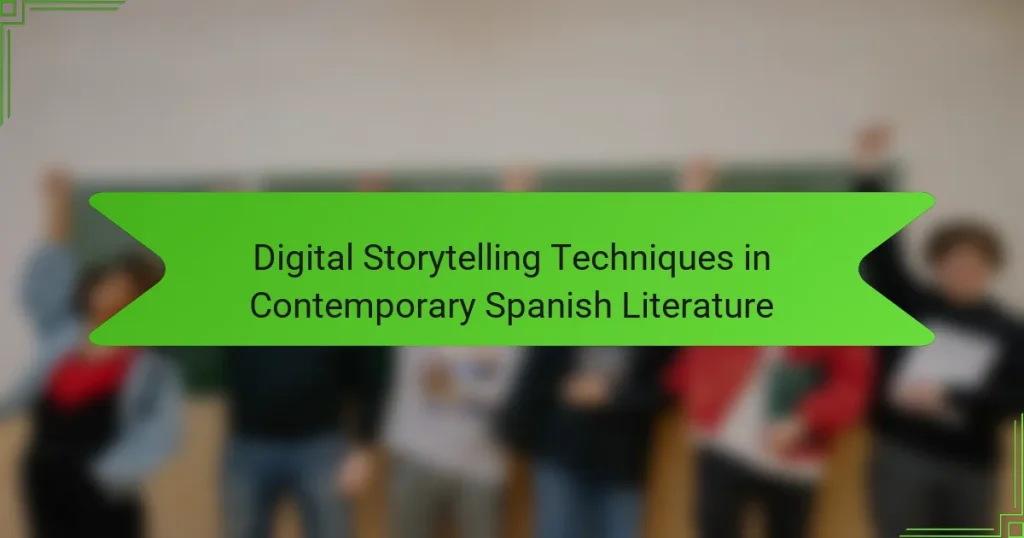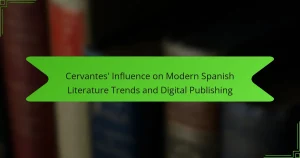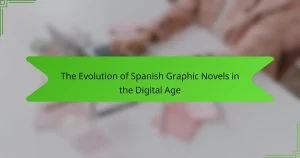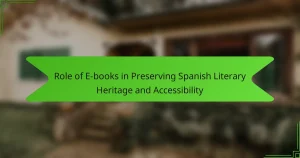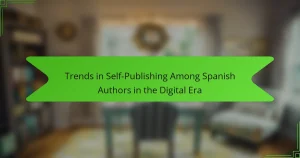Digital storytelling techniques in contemporary Spanish literature enhance narrative engagement and accessibility. Key methods include interactive narratives, multimedia integration, and transmedia storytelling. Platforms like Instagram, YouTube, and podcasts play a crucial role in reaching diverse audiences. Cultural influences shape these techniques, blending local traditions with modern technology while authors face challenges in audience engagement and technical skills.
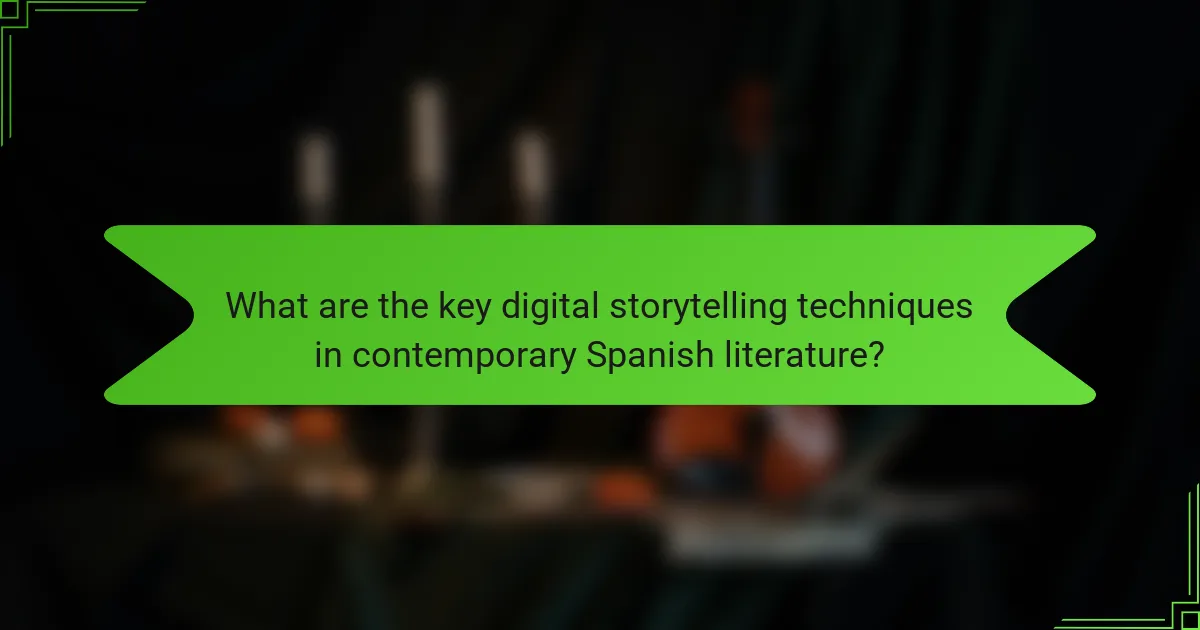
What are the key digital storytelling techniques in contemporary Spanish literature?
Contemporary Spanish literature employs key digital storytelling techniques that enhance narrative engagement. These techniques include interactive narratives, multimedia integration, and transmedia storytelling.
Interactive narratives allow readers to influence story outcomes, creating a personalized experience. Multimedia integration combines text with audio, video, and imagery to enrich the storytelling experience. Transmedia storytelling extends narratives across multiple platforms, engaging audiences in various ways and fostering deeper connections with characters and themes.
These techniques reflect a shift in how stories are told, making literature more accessible and engaging for modern audiences.
How do narrative structures influence reader engagement?
Narrative structures significantly enhance reader engagement by creating emotional connections and guiding the reader’s experience. In contemporary Spanish literature, techniques such as nonlinear storytelling and immersive character development draw readers into complex narratives. These structures allow for varied perspectives and unexpected plot twists, maintaining interest and encouraging deeper analysis. By employing these methods, authors can evoke stronger emotional responses and foster a more interactive reading experience.
What role does multimedia play in enhancing storytelling?
Multimedia significantly enhances storytelling by engaging multiple senses, creating immersive experiences. In contemporary Spanish literature, techniques like video, audio, and interactive elements enrich narratives, allowing deeper emotional connections. These tools enable authors to convey complex themes and cultural nuances effectively. For instance, integrating visual art can contextualize historical references, while audio elements can evoke specific atmospheres. This multifaceted approach not only captivates audiences but also broadens accessibility, making literature resonate across diverse demographics.

Which platforms are most effective for digital storytelling in Spanish literature?
Digital storytelling in contemporary Spanish literature is most effective on platforms like Instagram, YouTube, and podcasts. These platforms engage audiences through visual and auditory narratives, enhancing the storytelling experience. Instagram’s visual appeal allows for concise storytelling through images and short videos. YouTube offers a dynamic space for longer narratives, combining visuals and sound. Podcasts provide an intimate format for in-depth storytelling, allowing authors to explore themes and characters in detail. Each platform caters to different audience preferences, making them valuable for diverse storytelling techniques.
How do social media platforms shape narrative styles?
Social media platforms significantly influence narrative styles in contemporary Spanish literature by promoting brevity and visual storytelling. These platforms encourage authors to adapt their narratives to fit shorter formats, often incorporating multimedia elements.
The rise of platforms like Instagram and Twitter has led to a unique attribute of digital storytelling, where authors utilize images and hashtags to enhance their narratives. This shift allows for a more interactive engagement with readers, fostering a community around shared stories.
As a result, contemporary Spanish literature often reflects a blend of traditional storytelling techniques with modern digital aesthetics. This integration creates a dynamic narrative style that resonates with a broader audience, emphasizing the importance of adaptability in storytelling.
Moreover, the accessibility of social media has democratized storytelling, allowing diverse voices to emerge. This rare attribute enriches the literary landscape, showcasing a variety of perspectives and experiences that might otherwise remain unheard.
What are the benefits of using blogs for storytelling?
Using blogs for storytelling enhances engagement, builds community, and fosters creativity. They allow authors to share narratives in a dynamic format, reaching diverse audiences. Blogs enable immediate feedback, facilitating interaction and discussion. Additionally, they provide a platform for showcasing unique voices and perspectives in contemporary Spanish literature. This medium supports the exploration of themes and techniques, enriching the storytelling experience.
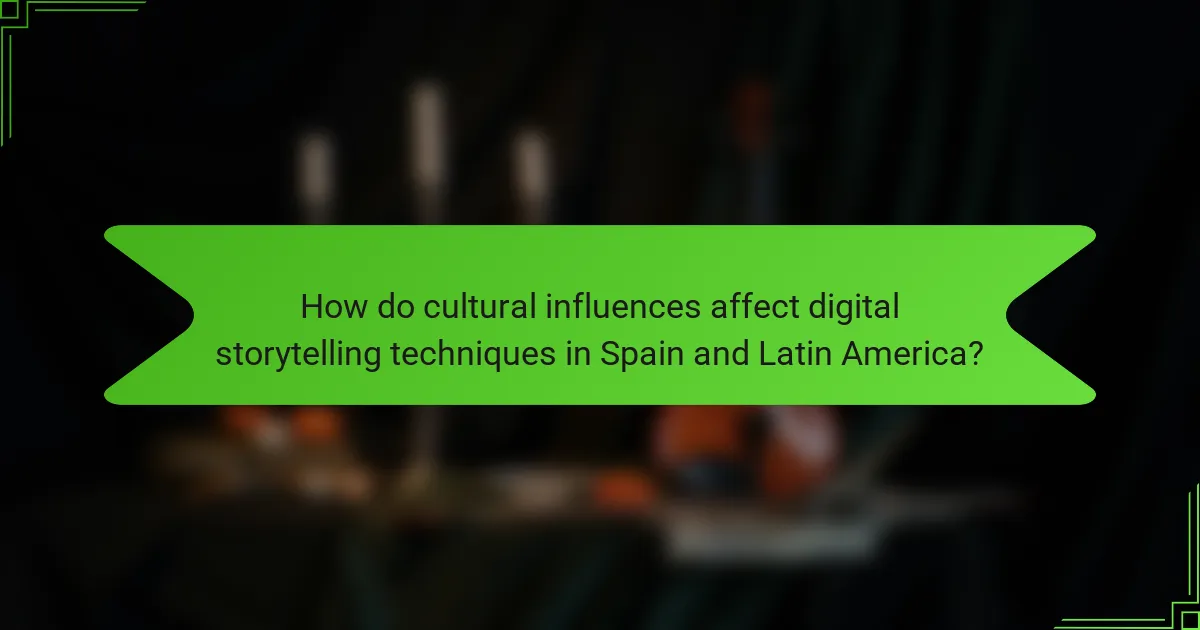
How do cultural influences affect digital storytelling techniques in Spain and Latin America?
Cultural influences significantly shape digital storytelling techniques in Spain and Latin America by integrating local traditions and modern technology. These regions blend oral traditions with digital platforms, creating rich narratives that reflect cultural identities.
For instance, Spanish literature often incorporates elements of magical realism, which enhances storytelling by weaving the fantastical into everyday life. Latin American creators frequently utilize social media to engage audiences, fostering interactive narratives that resonate with contemporary issues.
Moreover, the use of multimedia elements, such as video and animation, showcases cultural festivals and historical events, enriching the storytelling experience. This approach not only preserves cultural heritage but also attracts diverse audiences globally.
In summary, the interplay of cultural heritage and digital innovation drives unique storytelling methods that reflect the vibrant identities of Spain and Latin America.
What unique attributes define narratives in contemporary Spanish literature?
Unique attributes that define narratives in contemporary Spanish literature include interactivity, multimedia integration, and nonlinear storytelling. These elements enhance reader engagement and reflect modern cultural dynamics. For instance, authors often blend text with visual and auditory components, creating immersive experiences. Additionally, the use of digital platforms allows for audience participation, transforming readers into co-creators. Such techniques differentiate contemporary narratives from traditional forms, showcasing the evolution of storytelling in the digital age.
How does regional language variation impact storytelling?
Regional language variation significantly enriches storytelling in contemporary Spanish literature. It allows authors to express cultural nuances and regional identities, enhancing narrative authenticity. This diversity influences character development, dialogue authenticity, and thematic depth, making stories more relatable to specific audiences. For instance, regional dialects can convey emotional undertones that standard language may not capture, creating a richer reader experience. As a result, storytelling becomes a vehicle for cultural preservation and exploration, reflecting the multifaceted nature of Spanish-speaking communities.
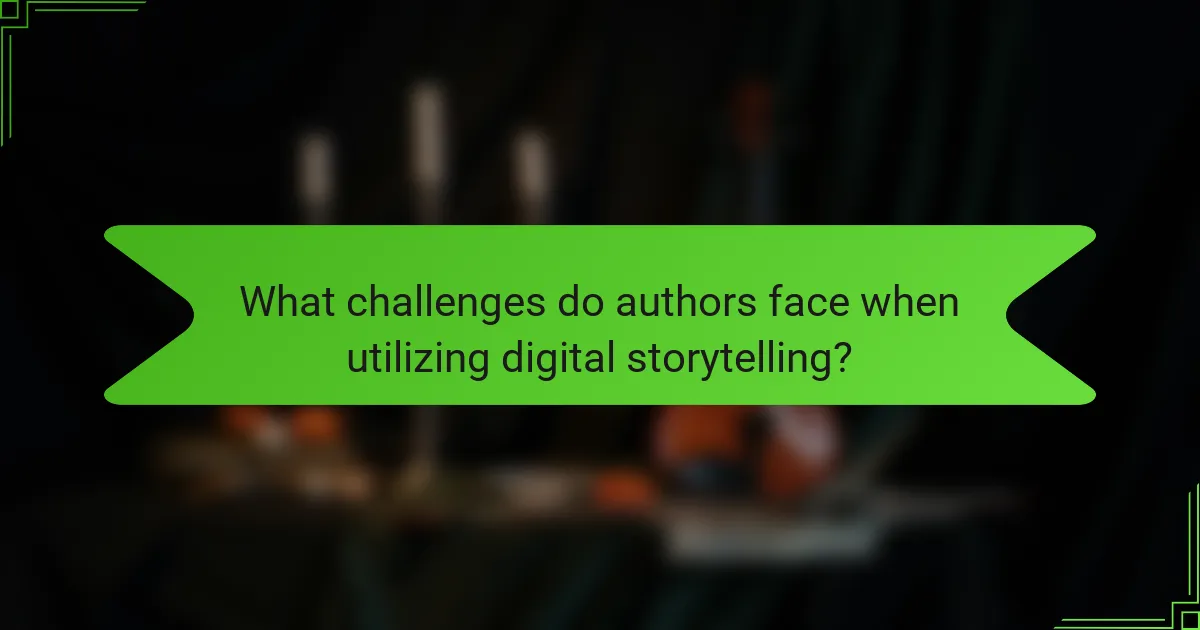
What challenges do authors face when utilizing digital storytelling?
Authors face several challenges when utilizing digital storytelling, including technical skills, audience engagement, and platform limitations. Mastering digital tools can be daunting, especially for those accustomed to traditional writing. Additionally, capturing and maintaining audience interest in a multimedia format requires innovative approaches. Lastly, different platforms impose constraints on content, affecting how stories are told and experienced.
How can authors overcome technological barriers?
Authors can overcome technological barriers by adopting digital storytelling techniques. Embracing multimedia elements enhances narrative engagement and accessibility. Utilizing platforms like social media fosters wider reach and interaction. Collaborative tools streamline the creative process, allowing for real-time feedback and innovation. Continuous learning about emerging technologies keeps authors adaptable and competitive.
What are the common pitfalls in digital storytelling?
Common pitfalls in digital storytelling include lack of authenticity, poor audience engagement, and ineffective use of multimedia. Authenticity is crucial; stories that feel contrived can alienate audiences. Engaging the audience through interactive elements is essential for retention. Additionally, using multimedia effectively enhances the narrative; however, overloading with visuals can distract rather than support the story. Balancing these elements is vital for successful digital storytelling in contemporary Spanish literature.
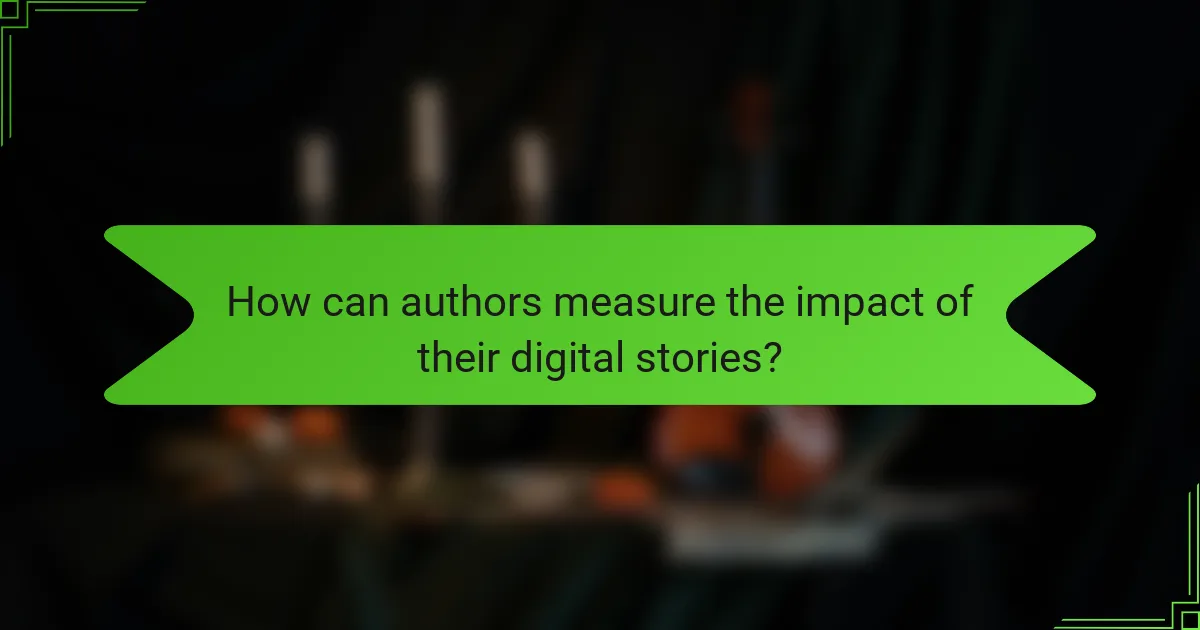
How can authors measure the impact of their digital stories?
Authors can measure the impact of their digital stories through audience engagement metrics, feedback analysis, and sales data. Tracking social media shares, comments, and likes provides insight into audience reach. Analyzing reader reviews and ratings reveals qualitative feedback on storytelling effectiveness. Additionally, monitoring sales figures and download rates helps assess overall market impact. These metrics collectively inform authors about their digital stories’ resonance and effectiveness in contemporary Spanish literature.
What metrics are most relevant for evaluating engagement?
Relevant metrics for evaluating engagement in digital storytelling include reader retention, interaction rates, social shares, comments, and conversion rates. These metrics provide insights into how effectively the narrative resonates with audiences.
| Metric | Description | Importance |
|———————|————————————————–|————————————-|
| Reader Retention | Percentage of readers who finish the story | Indicates narrative engagement |
| Interaction Rates | Number of readers who engage with content | Reflects audience interest |
| Social Shares | Frequency of content shared on social media | Measures reach and virality |
| Comments | Volume of reader feedback and discussion | Gauges emotional connection |
| Conversion Rates | Percentage of readers taking desired actions | Assesses effectiveness of storytelling|
How can feedback loops enhance storytelling effectiveness?
Feedback loops significantly enhance storytelling effectiveness by allowing continuous audience engagement and adaptation. They enable authors to refine narratives based on reader responses, creating a dynamic interaction. This iterative process fosters deeper connections, making stories more relatable and impactful. In contemporary Spanish literature, feedback loops encourage experimentation with digital platforms, integrating real-time audience insights. As a result, narratives evolve, reflecting diverse perspectives and enhancing overall storytelling quality.
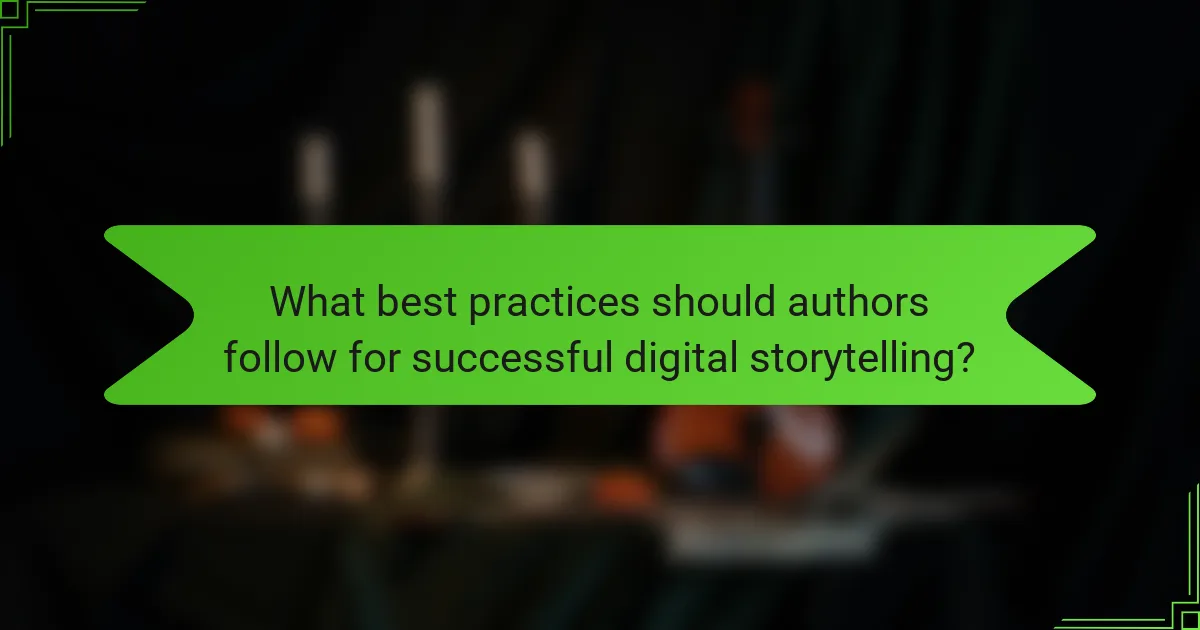
What best practices should authors follow for successful digital storytelling?
Authors should focus on authentic voice, strong narrative structure, and audience engagement for successful digital storytelling. Emphasizing character development and immersive settings enhances reader connection. Utilizing multimedia elements like images and audio can enrich the storytelling experience. Collaboration with digital platforms can also expand reach and accessibility.
How can authors effectively integrate visuals and text?
Authors can effectively integrate visuals and text by ensuring that each element complements the narrative. Visuals should enhance storytelling, providing context and emotional depth. For example, using illustrations or photographs can evoke specific feelings and clarify complex themes. Additionally, strategically placing visuals throughout the text can maintain reader engagement and emphasize key points. This approach aligns with the unique attribute of digital storytelling, where multimedia elements create a more immersive experience for the audience.
What strategies can enhance audience interaction?
Engaging audiences in digital storytelling can be enhanced through interactive elements, narrative techniques, and multimedia integration. Incorporating audience feedback fosters a sense of participation. Utilizing visual storytelling techniques, such as infographics and videos, captivates attention. Additionally, employing social media platforms for real-time interaction encourages dialogue and community building.
What common mistakes should be avoided in digital storytelling?
To excel in digital storytelling, avoid common mistakes that can undermine your narrative. Focus on clarity, coherence, and audience engagement.
1. Neglecting the audience’s needs can lead to disconnection. Tailor your story to resonate with their interests and emotions.
2. Overcomplicating the narrative may confuse readers. Maintain a clear structure with a logical flow of ideas.
3. Failing to incorporate visuals can weaken engagement. Use images, videos, or graphics to enhance storytelling and maintain interest.
4. Ignoring feedback can hinder improvement. Actively seek critiques to refine your storytelling techniques.
5. Relying too heavily on clichés can make your story predictable. Strive for originality to captivate your audience.
